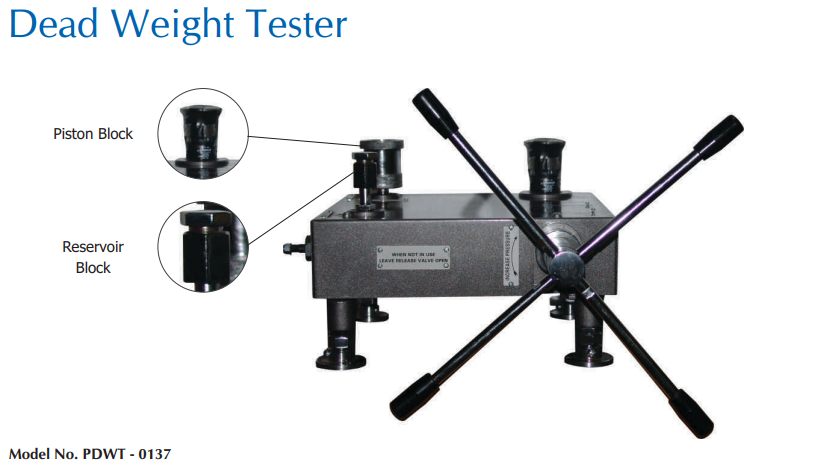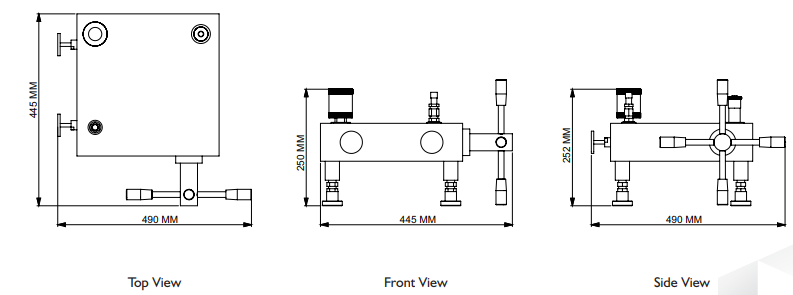

When it comes to calibrating pressure instruments with pinpoint accuracy, the Dead Weight Tester reigns supreme. Known as the gold standard in pressure measurement, this device delivers unmatched precision, making it a vital tool in industries where even the slightest error can spell disaster. The Dead Weight Pressure Gauge Tester uses basic physics to generate exact pressures, serving as a primary reference for calibrating gauges, transmitters, and switches. In this detailed guide, we’ll explore the Dead Weight Tester diagram, its working principle, operational steps, formula, uses, real-world applications, and even touch on the Dead Weight Tester price. We’ll also include a comparison table and answer the most common questions about this remarkable instrument, all in clear, straightforward language.

A Dead Weight Tester is a precision instrument that creates a known pressure to calibrate other pressure measuring devices. Unlike electronic calibrators that rely on sensors, this mechanical marvel uses weights and a piston to produce pressure with incredible accuracy-- often within "0.005% to 0.1%" of the reading. It is called a pressure balance because it balances the force of weights against the pressure of a fluid, typically oil or gas, in a sealed system. This makes the Dead Weight Pressure Gauge Tester a trusted choice in fields like oil and gas, aerospace, and manufacturing, where precision is non-negotiable.
Picture the Dead Weight Tester diagram as a snapshot of engineering simplicity. The key components include:

The Dead Weight Tester diagram shows the piston-cylinder connected to the oil reservoir, with the pump and port integrated. Weights stack on the piston platform, and the system is designed to balance the downward force of the weights with the upward push of the fluid pressure.
The Dead Weight Tester working principle is beautifully simple, rooted in Pascal’s law: pressure applied to a confined fluid spreads evenly in all directions. The tester works by balancing the force of calibrated weights (mass times gravity) against the pressure of fluid acting on the piston’s known area. This balance is captured in the Dead Weight Tester formula:
P = F / A
Where:
To ensure accuracy, the piston is gently spun to eliminate static friction, leaving only minimal dynamic friction. The operator uses the pump to pressurize the fluid until the piston and weights float freely, signaling equilibrium. At this moment, the system’s pressure matches the value calculated from the weights and piston area, providing a perfect reference for calibration. Factors like local gravity or temperature can affect results, so high-end testers include smart units to adjust for these variables.
Using a Dead Weight Tester demands care and precision. Here’s how it’s done:
Hydraulic Dead Weight Testers use oil for high-pressure ranges (up to= 10,000 bar), while pneumatic ones use gas for lower pressures or clean environments like food processing.
To better understand the options, here’s a table comparing hydraulic and pneumatic Dead Weight Testers:
| Feature | Hydraulic Dead Weight Tester | Pneumatic Dead Weight Tester |
| Fluid Used | Oil | Gas (e.g., nitrogen) |
| Pressure Range | 1 bar to 10,000 bar | 0.1 bar to 100 bar |
| Applications | High-pressure industries (oil, gas, aerospace) | Low-pressure, clean environments (pharma, sanitary) |
| Maintenance | Requires clean oil, regular checks for leaks | Simpler, less risk of contamination |
| Accuracy | 0.005% to 0.1% of reading | 0.01% to 0.1% of reading |
This table highlights the strengths of each type, helping users choose the right tester for their needs.
The Dead Weight Tester uses are extensive, covering industries where accurate pressure measurement is critical. Key applications include:
From low-pressure sanitary systems to high-pressure hydraulic rigs, the Dead Weight Tester handles it all with ease.
The real-world applications of Dead Weight Testers show their critical role in safety and efficiency. In oil and gas, pipeline pressure gauges must be spot-on to avoid leaks or explosions—Dead Weight Testers make this possible. In pharmaceuticals, cleanroom pressure controls rely on calibrated instruments to maintain sterile conditions, and testers ensure these systems work flawlessly.
Power plants use Dead Weight Testers to calibrate sensors in steam turbines, preventing failures that could shut down operations. In aerospace, hydraulic systems in aircraft, which operate under extreme pressures, depend on gauges calibrated by testers to ensure safe flights. These examples prove the tester’s value in high-stakes environments.
Here are the top four questions people ask about Dead Weight Testers, answered clearly:
Q1. What is the accuracy of a Dead Weight Tester?
Ans. A Dead Weight Tester typically achieves accuracy between 0.005% and 0.1% of the reading, making it one of the most precise tools for pressure calibration.
Q2. Can a Dead Weight Tester be used for both high and low pressures?
Ans. Yes, hydraulic testers handle high pressures (up to 10,000 bar), while pneumatic testers are ideal for low pressures (0.1 to 100 bar), depending on the model.
Q3. How often should a Dead Weight Tester be recalibrated?
Ans. Recalibration is usually needed every 1–2 years, depending on usage and manufacturer guidelines, to maintain accuracy.
Q4. Is a Dead Weight Tester portable?
Ans. Some compact models are portable for field use, but high-pressure or lab-grade testers are often stationary due to their size and weight.
The Dead Weight Tester is a masterpiece of engineering, blending simplicity with unmatched precision. It is working principle, based on the Dead Weight Tester formula, ensures reliable pressure calibration, while the Dead Weight Tester diagram reveals a design that’s both elegant and robust. From calibrating life-saving aerospace systems to ensuring pipeline safety, the Dead Weight Tester uses and real-world applications are vast and vital.
Though the Dead Weight Tester price may require a significant investment, its accuracy and longevity make it worth every penny. Whether you’re in a lab or on an oil rig, this tool stands as a beacon of trust in pressure measurement, proving that sometimes, the simplest solutions are the most powerful.
The Dead Weight Tester price depends on the model, pressure range, and features.
Get the Best Price on Dead Weight Testers Today
Looking for accurate pricing based on your specific needs ? Contact us now to get a customized quote tailored to your required pressure range and model features.
Call: +91 9210 903 903
Email: info@prestogroup.com
Related Blogs

Advanced hot air ovens for research labs ensure stability, safety and control. Upgrade your lab—buy reliable ovens in India now.

Achieve accurate inspection of automotive and aerospace components using optical profile projectors. Improve quality control and precision.

Protect medicine & pharma products with precise vacuum leak testing. Boost quality & trust – Get your tester today!